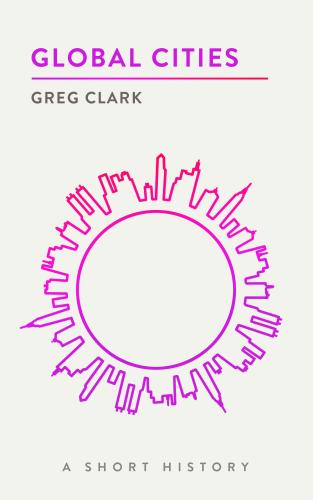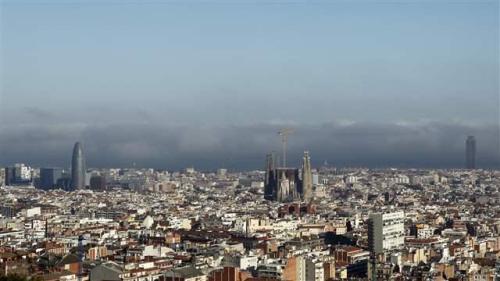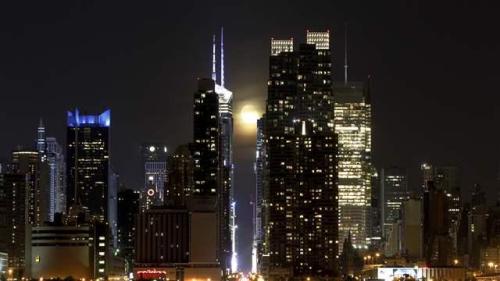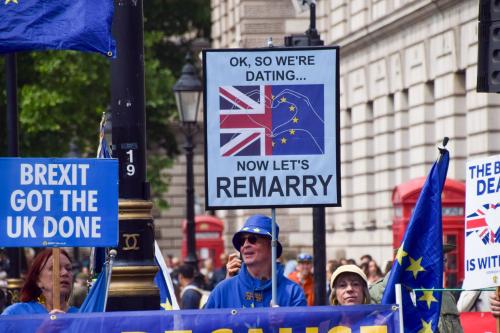Turbulent political times in advanced economies world-wide have raised new questions for global cities around the world. Businesses and residents in such cities are often highly integrated into the global economy. Yet current national policy climates in many countries appear to offer scant support for cities’ global aspirations.
Against unpromising national backdrops, cities face an imperative to assert themselves directly on the global stage. Growth in the number of globalizing cities with an array of assets and roles, combined with the weight of competition between them, drives the need for visibility, recognition, and differentiation. To win attention in international markets and rise above national agendas, globalizing cities must work not only on their business environment, skills base, and connectivity. They must also prioritize messaging and the creation of a global identity.
At a recent Global Cities Initiative summit, three of the world’s newly dynamic cities gave their insights on why global identity matters and how it works.
Stockholm is a highly livable city in northern Europe where the strong twin traditions of social democracy and corporate responsibility (including Volvo, Ericsson, IKEA, H&M, Electrolux, and AstraZeneca) are well known. Less recognized is the fact that Stockholm is also a fast-growing and socially diverse city, with a world-class business startup scene (including Skype, Spotify, and Wrapp), an award-winning airport, and universities that punch above their weight in science, technology, and medicine.
Tackling inherited views and sober stereotypes from the past—and delivering a new message about a dynamic, young, influential, and enterprising city—is the purpose of the city’s new “Stockholm: Capital of Scandinavia” identity platform. This aims to build a new reputation and identity for Stockholm as a city with scale, edge, reach, and relevance beyond its national borders. A strong public and private alliance involving the Stockholm Chamber of Commerce and the Stockholm Business Region supports the platform, which brings together the many municipalities in the metropolitan region. As Anna Gissler, CEO of Invest Stockholm Business Region, explains, this alliance of organizations, accessing new opportunities through this fresh global identity, is redefining the city.
One might say that San Diego’s visibility challenge derives from problems with its neighbors. Los Angeles and San Francisco (and their attack brands: ‘Hollywood’ and ‘Silicon Valley’) are so well-known as the respective global hubs of film and techno-innovation that it is hard for a third California city to get much limelight. Many third cities have this problem: consider Bilbao, Durban, Brisbane, Manchester, and Montreal. Like them, San Diego must try harder to reveal its compelling nature and gain international recognition for its assets.
Founded 250 years ago by Franciscan padres who marveled at its natural beauty and the abundance of sun, food, and fish, San Diego famously has ‘fertile DNA.’ Today, that includes human and venture capital as well as the natural resources that attract them. This DNA drives one of America’s most diverse innovation economies. With a metropolitan population of 3.3 million and a GDP in excess of $200 billion, six sectors stand out in San Diego’s regional economy: IT/telecommunications, clean tech, life sciences, cyber security, maritime and marine sciences, and action sports. As a result of beneficial interactions between these highly innovative sectors, San Diego has one of the highest patenting intensities among major U.S. metropolitan areas. Along with San Diego State University and the University of California at San Diego, the city boasts 80 research institutes, including the Sanford Consortium for Regenerative Medicine, the Scripps Research Institute, and the Salk Institute for Biological Studies.
According to Mark Cafferty, the CEO in charge, telling this story and making it stick is the key task for the San Diego Regional Economic Development Corporation. Through partnerships with business, universities, and government, its programs focus on translating some of the region’s robust ‘visitor economy’ success into opportunities for research, enterprise, and investment.
Despite the challenge from the northern neighbours, San Diego’s secret weapon in the contest for global visibility may actually be its southerly sister city, Tijuana, Mexico, rather than its Californian cousins. Tijuana has emerged as a complementary economy that shares with San Diego an aviation system, innovation and productive platforms, and a diverse population, skillset, and cultural mix. Over the next decade, this two-city metro may develop a unique proposition to distinguish itself in the world’s view, much like Copenhagen-Malmo, Seattle-Vancouver, and Bristol-Cardiff.
Barcelona’s global appeal and affection are now so well established that they are taken for granted. Yet just 25 years ago, the city did not use its waterfront and had no beaches, and it was in a state of industrial dereliction with high unemployment. It still suffered the post-traumatic stress of Spain’s authoritarian military dictatorship and its oppression of the Catalan people (which only ended in 1974). The 1992 Olympics re-introduced the city to the world, and in the ensuing years, Barcelona’s newfound dynamism fueled architecture, urbanism, enterprise, diplomacy, gastronomy, the arts, and tourism. Barcelona hosted the first World Urban Forum and its football team, FC Barcelona, became synonymous with almost effortless style and success: “more than a club” in a place that is “more than a city.” Yet these successes brought major challenges in accommodating steroid-like growth in tourism without corrupting the fabric and style of the city; and in reminding the world that Barcelona is not a ‘one-trick pony’ boasting only sport and leisure, with no business personality or investor community.
The 20th-century tools of promotional city marketing do not work well against these challenges. As a result, Barcelona Global, an independent nonprofit membership organization of business and civic leaders, is pushing to make Barcelona an open city for talent and economic activity. Managing Barcelona’s reputation and talent are two main activities of this young independent, not for profit organization, created less than five years ago. Its range of activities include an ‘intelligence network’ of expat Barcelona professionals living worldwide, creating a more welcoming experience for what they call ‘Barcelonians by choice,’ and helping the city build a longer-term agenda to face 21st-century challenges.
As CEO Mateu Hernandez explains, Barcelona must add “a business card to the postcard.” To this end, the city has sought global visibility for a burgeoning innovation economy via the 22@ Innovation District, the ALBA Synchotron, the Supercomputing Center, and the Life Science Incubator on the beach. Barcelona has leveraged its hosting prowess (the Olympic Games, The Urban Forum, The Secretariat of the Mediterranean Union) to reach a 10-year deal to bring the Mobile World Congress to the city, with 100,000 annual visitors and $50,000,000 annual net benefits. It has aligned its universities with the startup sector and recruited large firms to an ambitious program of repositioning towards enterprise growth. Most importantly, Barcelona has sought to leverage its visitor brand by creating compelling propositions for global talent that combines openness with livability, affordability, and enterprise.
These examples show how a compelling global identity can differentiate a city from the crowd and make local assets more visible by:
- Putting the city on the map and creating name recognition
- Driving demand, curiosity, and positive attitudes
- Highlighting a diversity of opportunities, not just to a single sector
- Providing third-party endorsements without the city needing to ask for them
- Creating the ‘benefit of the doubt’ in contests between locations, putting the city on long lists of candidate locations for high value mobile activities, from events, to institutions, to corporate locations.
- Attracting unpaid advertising via exposure in games, films, TV, books, songs, and videos
- Leveraging success in one realm to develop exposure in another
As globalizing cities operate within increasingly competitive markets, these kinds of identity dividends become essential. Consequently, there are clear risks to not having a well-managed global identity:
- The assets and scale of the city or metro are not recognized. It is assumed that the city is smaller than it actually is.
- The unmanaged identity, though visible, is unbalanced or distorted. The assumption may be that a metro is only good for what it is best known for, e.g. tourism, large corporations, or military.
- The repeated absence of any city or metro from key media, global benchmarks, and opportunity short-lists leads to assumptions about city constraints, or weaknesses that may actually be untrue.
A global identity must evolve over time and through cycles, and should never be static. Once a city or metro is well known, its faults, failures, and frictions will be widely reported. A metro with a clear global identity must become more proactive on reputation management, and should expect to deal with challenges as well as opportunities.
Stockholm, San Diego, and Barcelona demonstrate that a strong global identity, and the dividends it can yield, are the result of practical actions and competent alliances, and almost never the consequence of luck or accidents. Amid isolationist or populist headwinds in a growing number of nations, global identity may become an even more important tool for positioning cities at the forefront of globally integrated commerce.
The Brookings Institution is committed to quality, independence, and impact.
We are supported by a diverse array of funders. In line with our values and policies, each Brookings publication represents the sole views of its author(s).








Commentary
Global identity for city visibility
February 6, 2017